
Change your sleeves - change your look - Almain sleeves
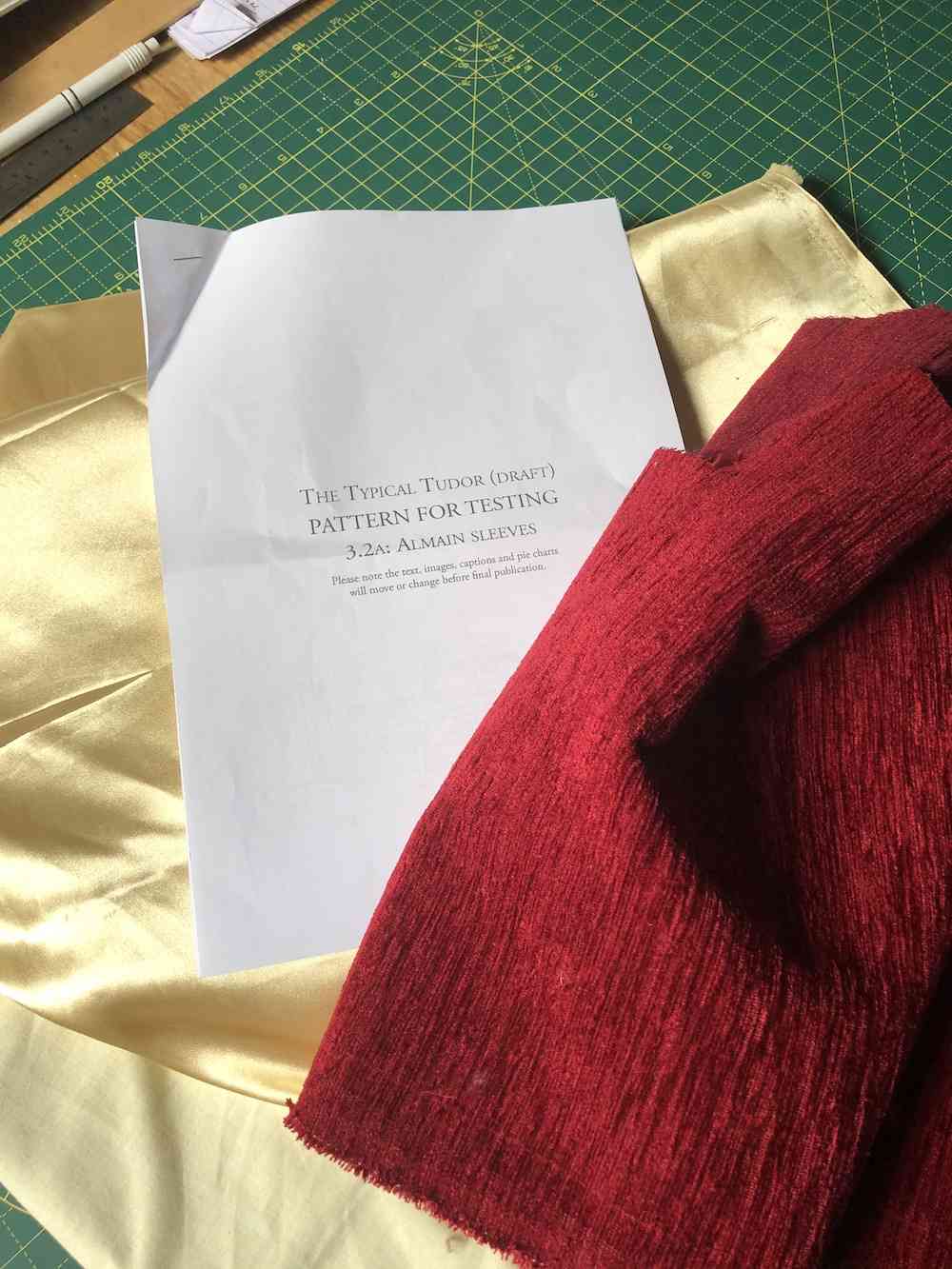
In this series of posts I’m going to share my experience of making different types of sixteenth century sleeves, starting with a fashion called Almain sleeves. I made these when pattern testing for the Tudor Tailor’s forthcoming book “The Typical Tudor”, which will include full instructions. - learn more here The Tudor Tailor
Here I’ll just give you a flavour of the construction techniques involved.
But first a bit of background……………….
Sixteenth century sleeves, both for men and for women, were often separate items, sometimes made up of several different parts. Setting a sleeve in requires quite a high level of tailoring skill which would not have been available to everyone. But our Tudor and Elizabethan forebears were also very clever in their use of costly fabric and always had an eye on making a little go a long way. Adding a different pair of sleeves was a great way of using a small amount of expensive fabric to completely change the look of an outfit and bring it up to date with the latest fashion trends.
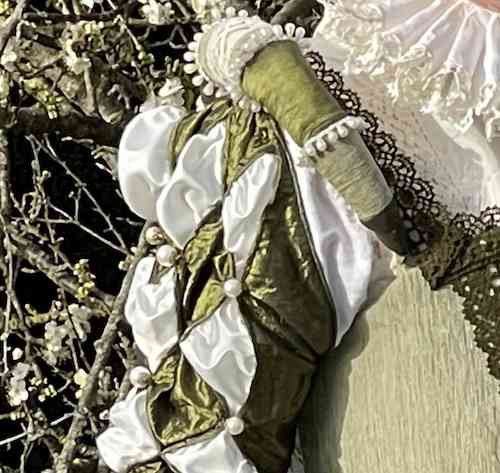
I’ve also found that separate sleeves are much more comfortable to wear. Leaving the underarm free allows a greater range of movement, particularly with the heavily padded and ornately decorated sleeves favoured by the wealthy during Elizabeth’s reign. It also allows for more air circulation which is a real boon in hot weather, and helps prevent any staining on the gown or the sleeve. The linen shift worn underneath can, of course, be frequently laundered - just as it would have been in their time.
In the sixteenth century we see increasing use of clothing to completely change the silhouette or the wearer. King Henry used puffed, padded and paned sleeves to increase the breadth of his shoulders, contributing to that familiar, larger-than-life, majestic figure he was so keen to promote. He and his fellow Kings across Europe favoured the rather “macho” fashion for “slashing garments, which I’ve described in my video “Slashed sleeves”. Initially this involved pulling the shift worn underneath through the slashes, but soon richer fabrics like silk were placed behind. Of course, where royalty lead, fashion followed.
Sleeves were attached using ties, laces, and pins, and might come in several parts - an upper sleeve, a fore-sleeve, and cuffs, each of which could be interchanged. The possibilities for mix and match are endless. It certainly makes a lot of sense to have separate cuffs, to allow independent laundering of an area that could easily become soiled, but was often embellished with embroidery or lace requiring careful handling.
Almain sleeves
The name comes from the French word for Germany, so it’s likely that this way of arranging the slashes in fore-sleeves was introduced from that country. A relatively small amount of fabric is needed, so even those lower down the social order might aspire to have this design, should they come by a scrap of silk. It works equally well with contrasting colours of linen or wool, if a more luxurious fabric is not available.
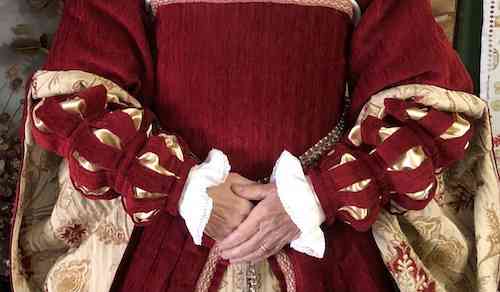
I wanted to team these sleeves with my red gown under existing hanging upper sleeves, so I used the same heavy velour fabric as the gown, with gold coloured silk for the decorative lining. As part of my drive to understand historical sewing methods I stitched these sleeves entirely by hand. The velour fabric wa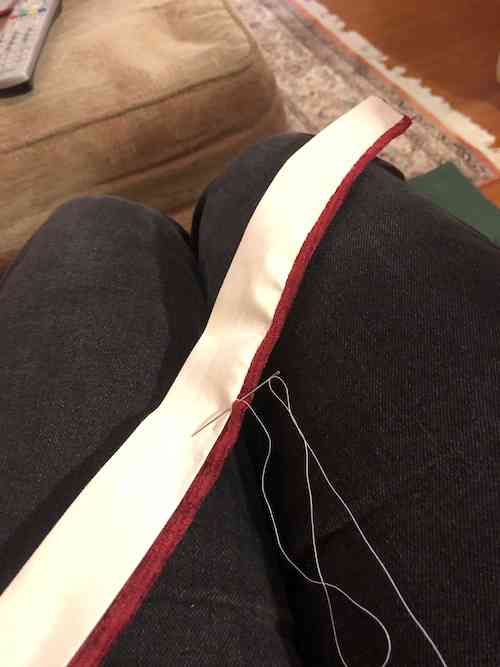 s a difficult choice - next timeI’ll use something less bulky.
s a difficult choice - next timeI’ll use something less bulky.
First I cut fabric strips - panes - from velour and attached linen lining to each by hand.
Next I cut a rectangle of decorative lining and placed three rows of gathering threads as shown.
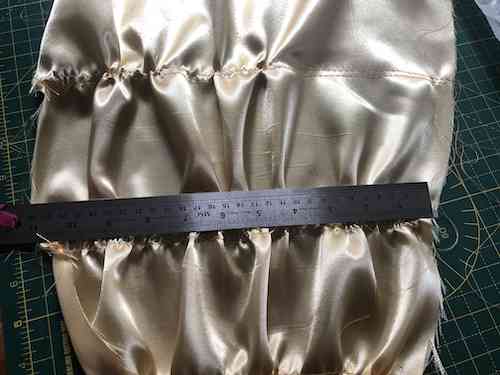
 Then the panes were laid over the the decorative lining and are fixed in place with running stitches
Then the panes were laid over the the decorative lining and are fixed in place with running stitches
Sleeve bands cut from velour were sewn over the gathering lines and the paned lower part attached to an upper sleeve portion before the long seam was closed.

Lastly .a linen lining was added. The part I found most tricky was adding a few stitches to secure the sleeve to the lining at the right point over the gathers to control the puffs.
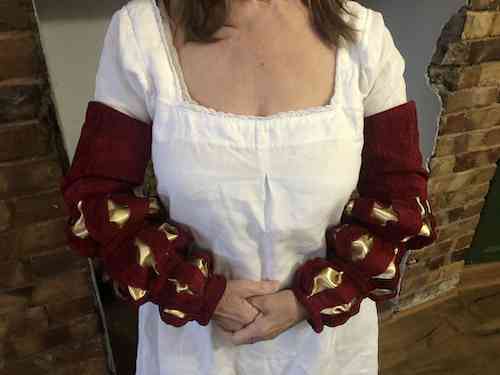
Sewing through that thick fabric was also hard work.
But under my hanging upper sleeves they work a treat, with separate cuffs tied in place with tapes.
 You can see each part of these sleeves being added to my costume in my vieo "dressing my Lady".
You can see each part of these sleeves being added to my costume in my vieo "dressing my Lady".
Use the buttons below to share this post on your social media